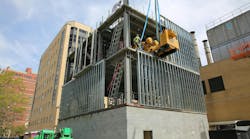The National Electrical Contractors Association (NECA) recently published the 22nd volume of its series of National Electrical Installation Standards (NEIS). NECA 111-2003, Standard for Installing and Maintaining Nonmetallic Raceways, describes procedures for installing three types of polymeric raceways, such as rigid nonmetallic conduit (RNC), electrical nonmetallic tubing (ENT), and liquidtight flexible nonmetallic conduit (LFNC).
It also covers subjects such as properly receiving and storing raceways on jobsites, cutting and bending raceways, making joints using solving cements, and installing concealed raceways in masonry and concrete.


